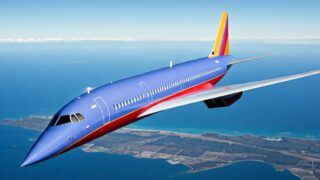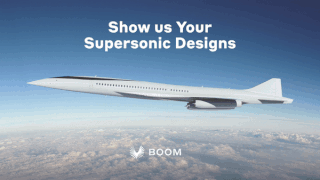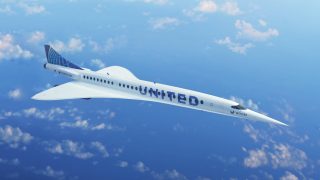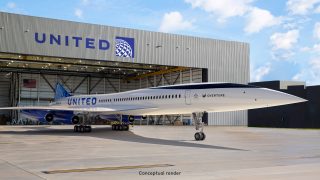October was supposed to bring a turning point for supersonic travel. A House aviation subcommittee had planned to take up new rules that could open the door for flights beyond the Concorde era. Instead, the government shutdown left the issue in limbo. Hawaii’s three-hour flight dream remains a dream.
Meanwhile, United Airlines has kept its commitment to Boom Supersonic with an order for its Overture aircraft, though United has never mentioned Hawaii in any route announcement. Together, these developments reignite the question: what would Los Angeles to Honolulu in three hours actually mean, and would travelers pay for it?
Skepticism runs deep.
Our readers do not mince words. One said that if they can barely afford regular flights, they would not pay double to get there faster. Hawaii is already expensive enough. Another pointed out the contradiction between pushing to limit visitor numbers and cheering on fuel-hungry supersonic jets. Still others doubt the whole concept, saying they will believe it when they are boarding at HNL.
That skepticism has a clear precedent. Concorde proved the technology works, but it never solved the economic issues. Tickets cost ten times as much as coach, fuel burn was hideous, and the opposition to noise was fierce. In 2003, the plane was retired, leaving behind a cautionary aviation tale.
The math for Hawaii flights.
For a Hawaii visitor, the pitch is obvious. Los Angeles to Honolulu in three hours instead of six. Seattle is under four. Sydney in half a day instead of ten hours. But how much would it cost?
Current economy fares from Los Angeles to Honolulu often run $400 to $600 round-trip, with business class closer to $1,200 on up. Analysts expect Boom’s tickets could land in the $3,000 to $5,000 range. That is at least two or three times the cost of a business class ticket.
For a six-hour round trip, time savings mean $500 to $700 for every hour saved. The question is whether Hawaii visitors who are already watching every dollar would spend thousands more to arrive by lunchtime.
In some ways, this aligns with the stated vision of Hawaii leaders who, like Tahiti and other iconic destinations, say they want less impact through fewer visitors spending more. The question is whether supersonic fares deliver that, or price out the very visitors Hawaii depends on.
Why Europe may get there first.
If supersonic flights become a reality, Europe is the likelier starting point. The business-heavy transatlantic market is much stronger. New York to London carries more premium business travelers in a single month than Los Angeles to Honolulu sees in an entire year. Those routes have the fares and the demand to justify new, innovative aircraft. Hawaii is overwhelmingly populated by leisure travelers looking for deals. That makes the islands a harder sell, likely to see service only years later, if at all.
Why this matters for Hawaii.
Aviation has always reshaped Hawaii travel. Propeller planes gave way to jets, which cut West Coast trips from ten hours to five. Widebodies opened the islands to millions of new visitors. Low-cost carriers reshaped expectations again. But every previous leap made flying cheaper. This one makes it more expensive, though more in line with Hawaii’s stated tourism goals of fewer visitors spending more.
Then come the roadblocks. The Overture plane has yet to be built. Boom is still designing its own Symphony engine, a massive hurdle on its own. FAA certification, noise rules, environmental impact, and billions in funding all stand between promise and reality. Even under Boom’s own timeline, commercial service is not expected until the early 2030s.
Industry analysts say leisure markets like Hawaii would be the last, not the first, to see supersonic service, given the price sensitivity of island vacation travelers.
Then there is the emissions question. Supersonic jets burn roughly five times more fuel per passenger than conventional aircraft, which presents a tough sell as Hawaii also promotes sustainability in tourism. Federal regulators, not the state, will make the final call.
A question for Hawaii travelers.
Hawaii travelers have pushed back hard against $50 in new fees, so would they ever embrace $2,000 more for a faster flight?
Would you pay up to $3,000 more for three extra hours in Hawaii, or is this Concorde 2.0, glamorous on paper but doomed in practice?
Get Breaking Hawaii Travel News






Yes I probably would if the aircraft is nice and comfortable. I’m 72 in good health, for now, with way more money than I know I can ever spend in the next 20 years and no one to leave it to.
Aloha to all, and a big no to the idea of paying several thousand dollars to cut off a couple hours of flight time. Ridiculous, take the money and spend it on something very special while in Hawaii and enjoy!
I can see where a Asian carrier would opt for a quick flight from Asia or the middle east to the Hawaiian islands, especially the wealthier populated Asian countries.
The airlines with supersonic flights will cut back inflight services to offer discounted fares. First Class with be offered “warm” Spam Musubi with water in glass ware. Economy will be offered “One” Vienna sausage” Cold, with a Dixie Cup (paper) of water. Plastic ware and a napkin is extra. LOL!!!
Who is to say If the Hawaiian airport runways and gates will ready for this type of plane. Just look at the conditions currently. And I am sure the Hawaiian goverment will find a way to add some sort of landing and takeoff fees. Oh, and how is the Sky Line train going?????
I wouldn’t pay extra for a super-sonic flight to Hawaii, but I would pay it for a trip to Australia. I haven’t been there yet, but a 20+ hour trip from the Midwest sounds absolutely grueling!
Mahalo
No, we’re not paying more to cut a few hours. Right now we fly from Los Angeles to Hawaii in five hours and a few minutes. This will get it down to three hours? Not enough time savings for us.
Cutting a 6 hour flight down to 3 hours costing the tourist up to $3000 more is like charging them nearly $1000/hr for the difference of a regular business class ticket on a normal commercial airline. The rich may not be affected from the difference but to most middle class folks that’s a big added expense.
IMO it all depends on how much disposable income one is willing to part with in going to Hawaii. IMO for some families it is getting to be as much to go to Hawaii as buying a new car if you have a family of 4 or more. At least with a car you got something and not just a memory.
None for me, thanks.
We fly to Hawaii twice per year and our travel time from Michigan is 11 – 13 hours (depending on the island) and costs $2,000 – $2,400 for two. It’s not practical to tack on that much of an additional cost on that portion of the journey.
It’s expensive enough to fly, rent a car when we go to Maui and we own our own condo there, have owned it since 1982. I wouldn’t consider paying $3,000 plus to cut two hours off my flight time, that is just for those elitiest that have pockets of money to spend. Definitely not worth it.
Aloha, no
Mahalo
I might do it once, for the “one and done” experience, but my real issue is that the west coast is rarely my final destination, so I’d have to give up non-stops to cities further east, which would kill much of the advantage of a shorter time to SFO or LAX.
Simply not worth the additional cost. I think the $3,000 estimate is optimistic at best.
The maintenance costs for these planes is going to be much higher than the average airliner. Transonic flight will put additional stress on the airframe and the unique engines will be more expensive to maintain as the economies of scale that apply to mainstream engines will not apply here.
As you stated, the economic problem still hasn’t been solved.
The airlines have stopped using widebodies for the semi-trans-Pacific hop from the west coast to Hawaii.
Why would they consider using supersonic jets for it?
Unless those birds have short legs, which would be counterproductive, you’ll see them used on as long of segments as possible – where you have people already inured to paying a lot for the trip, and willing to pay more to make the trip as short as possible.
For my wife and I, it isnʻt about getting to Hawaii earlier, its about less time in the air, making it less stessful on our aging bodies, and not requiring lie flat seats because the flight is shorter.
Agree, but maybe with more stress. The long flight cramped up in the almost inhumane seating arrangements was really undoable for us as we got older. Then the high prices to get somewhat more room. The time in the plane wasn’t the biggest part of the issue…it was the really painful (beyond just uncomfortable) seats for us. I get the feeling that there isn’t a concept of ‘minimum comfort’ for human passengers…. Do not go on long trips any more…and as few airplane trips as possible.